Foot & Ankle
Foot & Ankle Anatomy
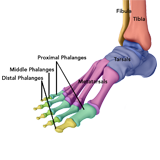
The foot and ankle in the human body work together to provide balance, stability, movement, and propulsion.
Achilles Tendon Rupture
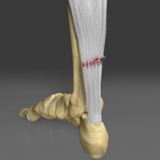
Achilles tendon is a strong fibrous cord present behind the ankle that connects the calf muscles to the heel bone. It is used when you walk, run and jump. The Achilles tendon ruptures most often in athletes participating in sports that involve running, pivoting and jumping. Recreational sports that may cause Achilles rupture include tennis, football, basketball and gymnastics.
Ankle Sprain
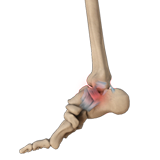
A sprain is the stretching or tearing of ligaments, which connect adjacent bones and provide stability to a joint. An ankle sprain is a common injury that occurs when you suddenly fall or twist the joint or when you land your foot in an awkward position after a jump. Most commonly it occurs when you participate in sports or when you jump or run on a surface that is irregular. Ankle sprains can cause pain, swelling, tenderness, bruising, stiffness, and inability to walk or bear weight on the ankle.
Common Toe Deformities
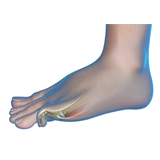
Anatomically the foot is divided into the forefoot, mid foot and hind foot. The Forefoot has 4 small toes called phalanges and 1 large toe called the hallux or big toe. Phalanges have 3 bones and 3 joints, while the big toe has 2 bones and 2 joints. The mid foot and hind foot have different structures, which are responsible for bearing body weight and performing activities such as walking and running.
Plantar Fasciitis
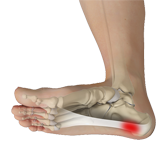
Plantar fasciitis refers to inflammation of the plantar fascia, a thick band of tissue that lies at the bottom of the foot. It runs from the heel bone to the toe and forms the arch of your foot. Plantar fasciitis is one of the most common causes of heel pain. It is most often seen in middle-aged men and women, but may also occur in those who are constantly on their feet such as soldiers.
Ankle Fractures
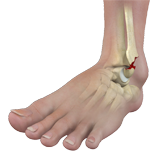
The ankle joint is composed of three bones: the tibia, fibula, and talus which are articulated together. The ends of the fibula and tibia (lower leg bones) form the inner and outer malleolus, which are the bony protrusions of the ankle joint that you can feel and see on either side of the ankle.
Bunion Surgery
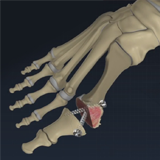
A bunion, also called a hallux valgus, is an enlargement of bone or soft tissues around the joint at the base of the big toe that results in the formation of a bump. The bone that joins the big toe with the first metatarsal bone thickens and enlarges, tightening the tendons, which in turn causes the base of the big toe to angle out resulting in a painful bony deformity.
Ankle Arthroscopy
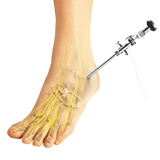
Ankle arthroscopy is a minimally invasive surgical procedure in which an arthroscope, a small, soft, flexible tube with a light and video camera at the end, is inserted into the ankle joint to evaluate and treat a variety of conditions.
Ankle Joint Replacement
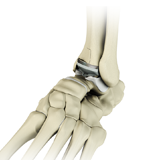
The ankle joint connects the leg with the foot and provides free movement to the foot. It is formed by connecting the bones of the lower leg, tibia and fibula, with the talus, or ankle bone.







